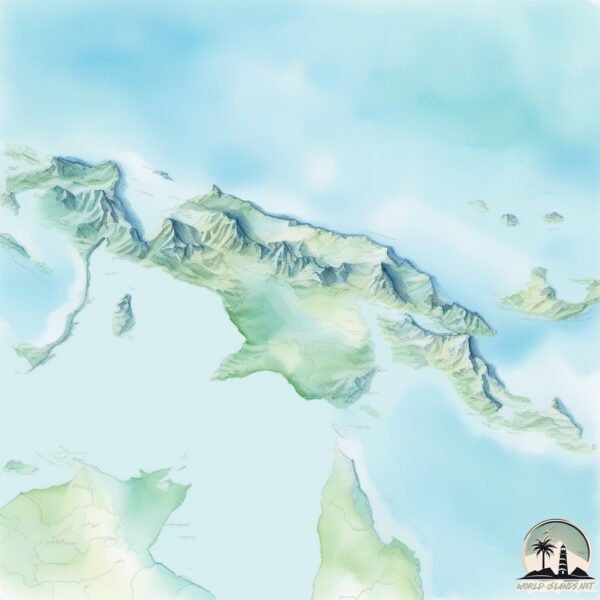New Guinea is a Colossal Island spanning 773751 km² with a coastline of 33430 km.
Topography and nature of New Guinea
Timezone: UTC+10:00Timezone places: Australia/SydneyMax. Elevation: 4884 m Puncak JayaMean Elevation: 588 mVegetation: Evergreen Broadleaf ForestTree Coverage: 69%
The mean elevation is 588 m. Dominating the island’s landscape, the majestic “Puncak Jaya” rises as the highest peak, soaring to impressive heights. The island is characterized by Mountains: High, steeply elevated landforms. Characterized by both a high maximum elevation (over 500 meters) and a high mean elevation, creating rugged, mountainous terrains on islands.
Dominating Vegetation: Evergreen Broadleaf Forest
Vegetation: 18 vegetation zones – Exceptionally Diverse Island
Infrastructure and Travelling to New Guinea
Does the island have a public airport? yes .
Does the island have a major port? yes .
The mean population of New Guinea is 20 per km². New Guinea is Gently Populated. The island belongs to Papua New Guinea .
The name of the island resonates across different cultures and languages. Here is how it is known around the world: Arabic: غينيا الجديدة; German: Neuguinea; Spanish: Nueva Guinea; French: Nouvelle-Guinée; Portuguese: Nova Guiné; Russian: Новая Гвинея; Chinese: 新幾內亞
Continuing your journey, Mam Dadi is the next notable island, situated merely km away.
Why does Indonesia Own Half of New Guinea?
Why Does Indonesia Own Half of New Guinea? ♢Consider supporting our work and Join this channel to get access to perks: ...
Why does Indonesia Own Half of New Guinea?
Why Does Indonesia Own Half of New Guinea? ♢Consider supporting our ...
Why Does Indonesia Own Half of New Guinea? ♢Consider supporting our work and Join this channel to get access to perks: ...
The Newest Country Is Coming
Bougainville
A Pacific Island
Did you know what the newest country in the world is? Right now, it's ...
Did you know what the newest country in the world is? Right now, it's South Sudan — a nation that gained independence ...
The Skeleton Tribe of Papua New Guinea lives in the heart of the Chimbu region not too far from Moun
The Skeleton Tribe of Papua New Guinea lives in the heart of the ...
The Skeleton Tribe of Papua New Guinea lives in the heart of the Chimbu region not too far from Mount Hagen. Their significant ...
Papua New Guinea is classified as Developing region: Regions characterized by lower income levels, with economies in the process of industrialization and modernization. The level of income is Lower middle income.
News – Latest Updates and Headlines from New Guinea
Stay informed with the most recent news and important headlines from New Guinea. Here’s a roundup of the latest developments.
Loading...
Social Media Posts about New Guinea
Loading...
Please note: The data used here has been primarily extracted from satellite readings. Deviations from exact values may occur, particularly regarding the height of elevations and population density. Land area and coastline measurements refer to average values at mean high tide.

